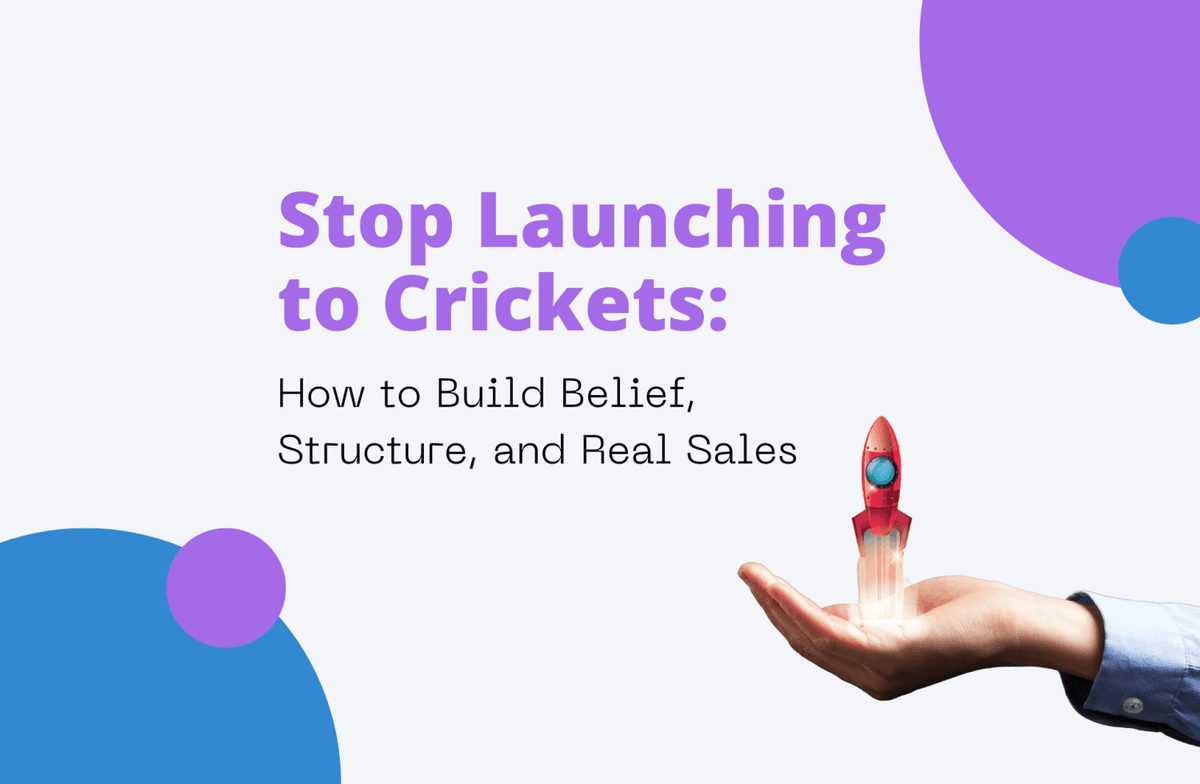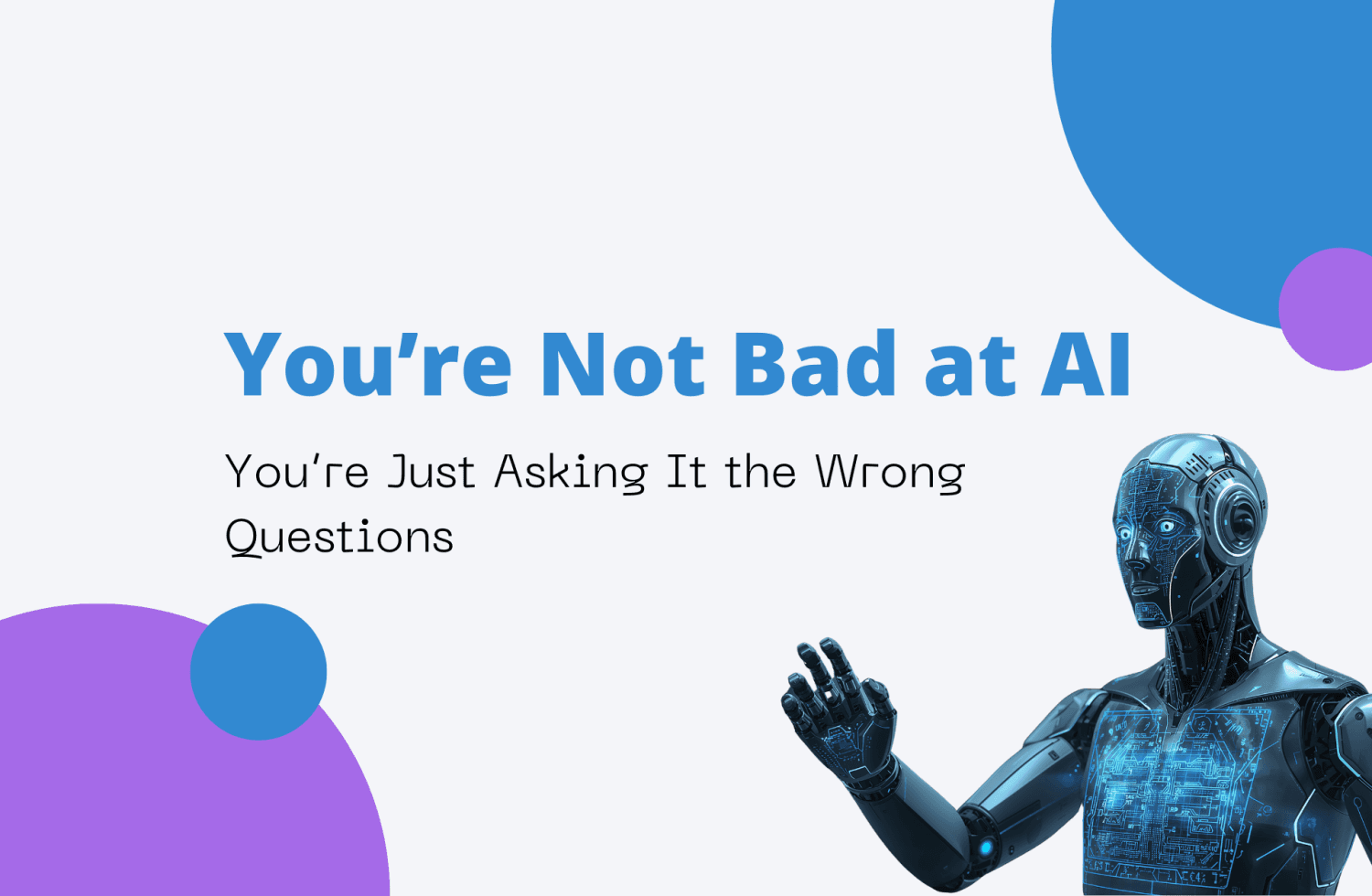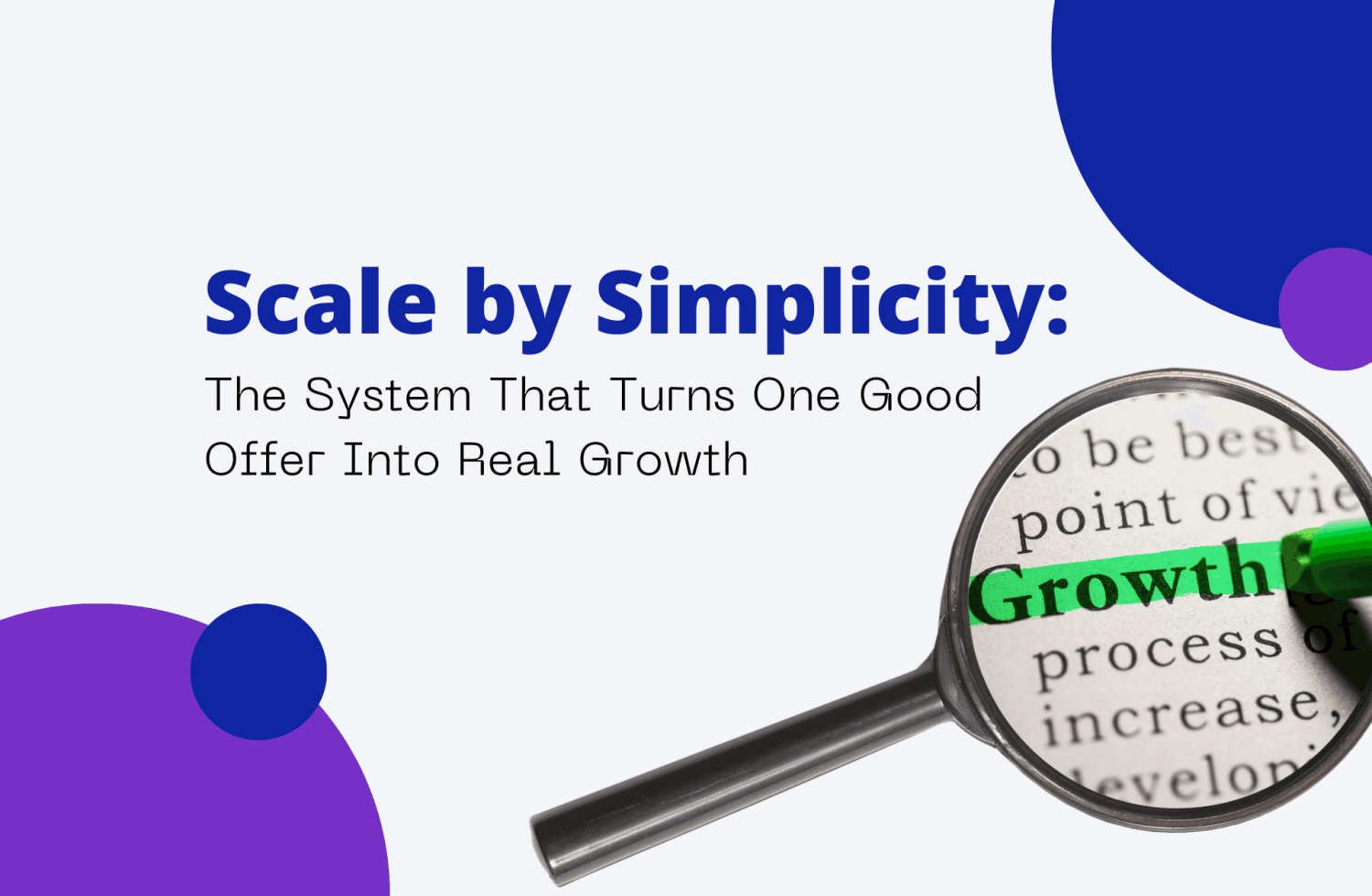Click Here to Download The PDF Version.
You know the feeling.
You’ve got this idea—clear in your mind, exciting on paper, real in your hands.
You’ve spent hours (maybe weeks, maybe months) getting it just right.
You’ve poured heart and time into building something valuable.
You’ve thought about the people it could help.
Maybe you even stayed up late, tweaking the details just to make it better.
And then…
Launch day comes.
You hit publish. You share the link. You wait.
Nothing happens.
It’s not because you didn’t work hard.
It’s not because your offer isn’t good.
It’s because the launch itself didn’t prepare people to care, trust, or act.
So many great creators, entrepreneurs, and small teams fall into this trap.
They build something brilliant—and then leave the launch to chance.
The truth? Sales don’t come from noise.
They come from structure.
From building belief step by step.
From showing up in a way that makes people feel seen, informed, and ready.
This blog will walk you through that structure.
And by the time you reach the end, you’ll have a plan you can actually use—with examples, tools, and stories that make it real.
The Real Reason Launches Fail
Most people don’t launch wrong because they’re lazy or careless.
They launch wrong because no one ever showed them how to do it in a way that actually works.
They build something. Then they announce it.
And then they wait.
That’s it.
No build-up. No feedback. No rhythm. No warm-up.
Just a single drop into the void.
But here’s what successful launches understand:
People don’t just need a product.
They need time, context, and clarity.
They need a reason to care and a reason to believe.
The most effective launches aren’t flashy or complex.
They’re simple, structured, and repeatable.
Let’s walk through that structure now.
Think of it as a staircase. Each step earns the next.
Step 1: Start With a Clear Promise
Forget fancy language. Forget polished taglines.
Start with clarity.
People don’t buy when they’re confused.
They buy when they understand exactly what’s being offered, who it’s for, and what result it delivers.
Your job? Make your promise obvious.
Use words your audience would actually say.
And make sure they can repeat it in one sentence.
Real Example
A fast-growing startup rolled out a new onboarding guide for remote hires.
It was packed with everything a new teammate would need—access instructions, culture tips, next steps.
But almost no one used it.
New hires weren’t even sure it was for them.
The title sounded vague.
The document looked long and boring.
Most people either ignored it or opened it, skimmed a few lines, and closed it again.
They changed the name and intro.
The guide was now titled: “For New Remote Hires: Get Set Up in 60 Minutes.”
The first sentence read: “Use this checklist to log in, get your tools, and start strong.”
Completion rates tripled in one week.
If someone doesn’t understand your promise in 10 seconds, they won’t dig deeper.
Make it obvious. Make it repeatable. Make it real.
Step 2: Make Sure People Want It
Here’s the truth: what you think people want isn’t always what they’ll pay attention to—or pay for.
Before you spend weeks building the perfect thing, spend a few hours making sure people actually want it.
That doesn’t mean running surveys or building prototypes.
It means listening, testing, and adjusting.
Real Example:
A wellness lead inside a mid-sized company spent a month building a burnout training program.
It was thoughtful, well-designed, and packed with useful content.
When she launched it, barely anyone signed up.
She was confused.
This was a topic people constantly brought up.
But it turned out that employees didn’t want a multi-hour course.
They didn’t feel like they had the time—and didn’t even know if it would help.
She paused the launch.
Posted two questions in Slack: “What’s your biggest stressor right now?” and “If a 10-minute tool could help you reset, what would it look like?”
The feedback was quick and honest.
People wanted something shorter, quicker, and more focused.
So she rebuilt it as a series of three short videos and a quiz.
People watched them. Shared them. Asked for more.
Don’t guess. Ask.
Pay attention to how people respond.
Build with them—not just for them.
Step 3: Build a Page That Gets Action
If your landing page feels like homework, people will bounce.
You don’t need 20 sections, a long scroll, or clever design.
What you need is one clear headline, one button, and three quick reasons to care.
Real Example:
A DEI team at a large company wanted feedback from employees about their experience.
They created a long email with three attached documents and a link to a survey.
Almost no one filled it out.
The message looked like every other corporate update.
The link was buried. The context was fuzzy.
Employees had to read too much just to understand what it was about.
The team scrapped the attachments.
Rebuilt the survey landing page with one bold message: “Shape Our Culture in 2 Minutes.”
Below it: one sentence, one CTA button, one visible progress bar.
Participation skyrocketed.
It wasn’t about pushing harder—it was about making it easier.
Make your page so simple it feels obvious.
People aren’t lazy—they’re overwhelmed.
Remove the friction.
Step 4: Warm Up Your Audience
The biggest mistake people make? Launching to silence.
Your audience needs context.
They need to know why this matters, what problem it solves, and what part of it connects to their world.
Real Example:
A product team released a new reporting dashboard.
It was faster, more accurate, and visually cleaner. But barely anyone used it.
The only mention of the update was in a newsletter bullet point.
Employees didn’t know what changed, didn’t know how it helped, and didn’t feel motivated to switch over.
A week before re-launching, the team posted one short screen recording per day.
Each one showed a single real-world use case.
“Here’s how you’ll save 20 minutes pulling monthly reports.”
“Here’s how you can filter by region in 2 clicks.”
By the time the dashboard went live, users were already familiar.
Usage hit 90% in just over a month.
Warm-up isn’t fluff. It’s momentum.
If people aren’t excited before you launch, they probably won’t be after.
Step 5: Make the Offer a No-Brainer
Even the best offer can fail if it makes people feel uncertain.
People hesitate when something feels confusing, risky, or hard to start.
The key is to make the first step feel small and safe.
Real Example:
A branding agency introduced a new consulting package.
It promised high value—but clients weren’t buying.
Even warm leads ghosted after hearing the pitch.
Clients liked the idea but weren’t ready to commit.
It felt expensive. It felt long. It felt like a big decision.
The agency redesigned the offer to include a “fast-start” call.
In just 30 minutes, clients would get a custom roadmap within 48 hours.
They also added a no-questions-asked refund for first-time clients.
It changed everything.
The offer no longer felt like a leap—it felt like a test drive.
Sales picked up that same week.
You’re not just offering a product. You’re helping people make a decision.
Make it feel easy to begin.
Step 6: Run a Real Launch Week
One-day launches don’t work anymore.
Attention is scattered. People need reminders.
They need to hear your offer more than once—and in different ways.
Real Example:
A solo coach announced a group program on Monday morning.
One post. One email. Two people signed up.
She had a great offer—but most of her audience missed it.
Those who saw it didn’t have time to decide. Others weren’t sure if it was right for them.
The next time, she stretched the launch across five days.
Day 1: live walkthrough.
Day 2–4: daily short videos highlighting real results and answering questions.
Day 5: final reminder with a countdown.
By the end of the week, 80% of spots were filled.
Most came in the final two days.
People don’t act when you post once.
They act when you show up consistently.
Step 7: Close Strong, Then Improve
The end of a launch isn’t the finish line. It’s the start of your feedback loop.
Closing strong means following up, collecting insights, and understanding what really worked.
Real Example:
A SaaS product team celebrated the release of a new tool.
Launch day looked good.
But when they tried to replicate it months later, the results were worse—and they didn’t know why.
They hadn’t asked for feedback.
They didn’t know what users liked, what confused them, or what caused drop-off.
After the next launch, they sent a final reminder, a welcome email to new users, and a short feedback form.
They learned that the onboarding was unclear and that users wanted video walkthroughs.
They implemented the changes—and engagement in the next rollout jumped significantly.
Don’t just celebrate.
Study.
Every launch is full of lessons you can’t afford to miss.
Resources to Help You Go Deeper
Book: Launch by Jeff Walker
A top-rated, practical book on how to structure launches that actually get results.
TED Talk: How Great Leaders Inspire Action by Simon Sinek
A masterclass on clarity, belief, and why starting with “why” changes everything.
AI Tool: ChatGPT by OpenAI
Perfect for writing launch copy, emails, landing pages, and brainstorming angles.
Podcast / Radio Show: Under the Influence by Terry O'Reilly
Real-world marketing lessons told through compelling stories that stick with you.
Podcast: The LaunchNotes Podcast
Honest insights from product teams on how real launches happen inside growing companies.
Build Belief, Not Just Buzz
There’s a quiet truth behind every great launch: the people who succeed aren’t louder, luckier, or more connected.
They’re just more prepared.
They respect the process.
They give their work a chance to be understood.
They stop hoping—and start building belief, step by step.
Every launch is a conversation between you and the people you hope to help.
When you show up with structure, with clarity, with care—you make it easier for people to say yes.
Not because they’re being sold to, but because they finally see what you see.
So don’t launch and hope. Launch and lead.
Your idea deserves more than silence.
It deserves the kind of structure that makes it matter.
And if you’re willing to keep showing up—you’ll get there.
Not just once, but every time after.
Want the Infographic as a PDF?
If you want a visual version of this blog to keep, share, or use as a guide during your own launch, you can download the Launch Plan Staircase infographic as a printable PDF.





